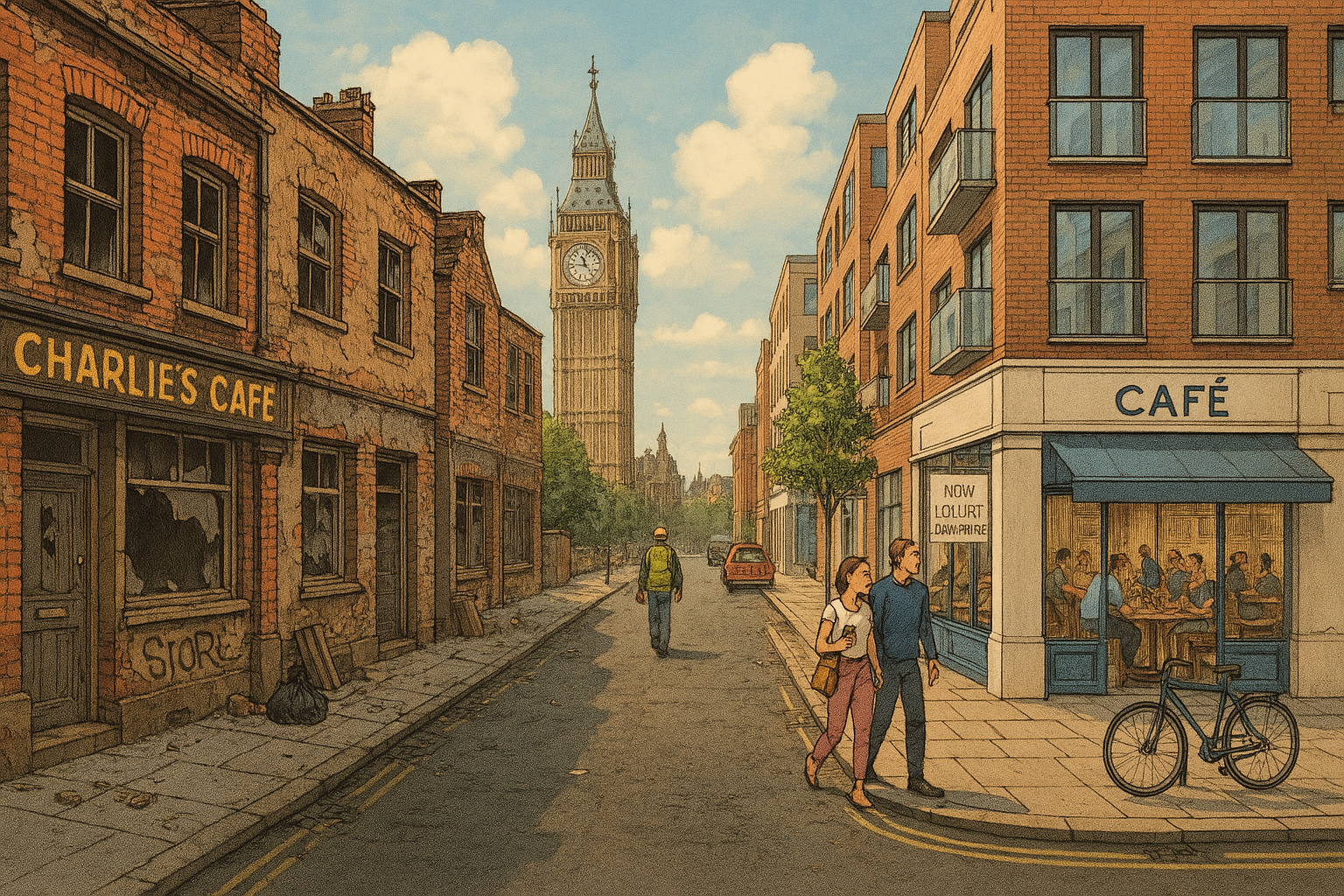Gentrification
The term ‘gentrification’ refers to changes that occur over time as a direct or indirect result of people on higher incomes purchasing or renting property in low income or ‘working class’ areas.
In an urban context, gentrification is associated with movement and can be viewed positively, in that it drives investment and economic prosperity to an area; and negatively, in that there is the perception that the traditional character and culture of an area becomes diluted and gradually rendered obsolete.
The term derives from the word ‘gentry’ which historically referred to people with wealth, although it originates from the Old French ‘genterise’ meaning ‘of gentle birth’ which became anglicised as ‘gentleman’. The term itself was coined by the sociologist Ruth Glass in 1964 in response to the influx of middle-class people to the cities which she saw as displacing ‘lower-class’ residents.
Urban theorists broadly agree in the belief that before an area becomes gentrified it must experience a period of disinvestment and decline. During this period, median income levels decline, infrastructure and buildings fall into disrepair, and businesses relocate elsewhere. These are often described as ‘urban wastelands’.
At some point in this period of decline, the area starts to attract people who are predominantly young, educated, artistically-minded, and with some level of disposable income. Artist communities, exhibition and performance spaces, underground music venues, and independent shops begin to appear in abandoned industrial spaces, as the area develops a reputation for being ‘alternative’, ‘edgy’ and ‘bohemian’, reflecting the lifestyles and tastes of those who move there.
Where once an area may have been viewed as unwelcoming or dangerous, it slowly becomes a more attractive prospect to real estate developers and wealthier young people who may be moving into a city from the suburbs or elsewhere. Responding to the interest, developers may seek to buy and regenerate old buildings, creating new apartments which gradually push property prices higher. As this happens, the reputation of the area as being ‘alternative’ and ‘interesting’ starts to diminish; independent businesses are replaced by chain stores, the unique character of the area becomes more homogenised.
The firmest indication of gentrification is an increase in property prices, rents and taxes in a particular district. This usually correlates with the increased incomes of people arriving in the area. As a result, those on lower incomes are ‘priced out’ of the area, and it slowly becomes economically homogeneous.
Political initiatives often have the effect of promoting gentrification, by introducing deferred taxes for real estate companies, mortgage incentives for first-time buyers, and financial incentives for the owners of rental housing or other buildings that require renovation.
One of the main advantages of gentrification is that old industrial buildings are renovated and redeveloped which can make the area more visually appealing and reduce crime rates. It can also reduce vacancy rates and encourage further development and business investment, which can increase employment opportunities.
The rise in property values cause taxes based on values to increase; but this can result in owners unable to pay the taxes being forced to sell their property and move to a cheaper community.
Rent controls are seen as one potential action that can combat gentrification pricing out local residents. However, controls can be counter-productive, and cities such as New York have found that they reduce the number of available rental properties, or subsidise wealthy inhabitants. Other measures are similarly controversial, such as demands that new builds provide socially-affordable housing provision, which leads to complaints that such accommodation is often of poor quality or sold by developers to overseas investors, leaving lucrative properties empty.
Examples of urban gentrification that some consider to have had a net-positive effect include the areas of Shoreditch and Hackney in East London; Brixton in South London; Brooklyn in New York; and Kreuzberg in Berlin.
See also: Gentrification in London
[edit] Related articles on Designing Buildings
- Affordable housing.
- Central business district (CBD).
- Densification.
- Edge Debate 71 - Can decentralisation solve the housing crisis?
- Gentrification in London
- Housing associations.
- Must cities grow to compete?
- Private rented sector.
- Public space.
- Regeneration.
- Shared heritage from a social perspective.
- Social housing.
- Suburb.
- The compact sustainable city.
- The future of the green belt.
- Town planning.
- Urban decay.
- Urban design.
- Urban sprawl.
Featured articles and news
Villa Wolf in Gubin, history and reconstruction. Book review.
Construction contract awards down £1bn
Decline over the past two months compared to the same period last year, follows the positive start to the year.
Editor's broadbrush view on forms of electrical heating in context.
The pace of heating change; BSRIA market intelligence
Electric Dreams, Boiler Realities.
New President of ECA announced
Ruth Devine MBE becomes the 112th President of the Electrical Contractors Association.
New CIAT Professional Standards Competency Framework
Supercedes the 2019 Professional Standards Framework from 1 May 2025.
Difficult Sites: Architecture Against the Odds
Free exhibition at the RIBA Architecture Gallery until 31 May.
PPN 021: Payment Spot Checks in Public Sub-Contracts
Published following consultation and influence from ECA.
Designing Buildings reaches 20,000 articles
We take a look back at some of the stranger contributions.
Lessons learned from other industries.
The Buildings of the Malting Industry. Book review.
Conserving places with climate resilience in mind.
Combating burnout.
The 5 elements of seiri, seiton, seiso, seiketsu and shitsuke.
Shading for housing, a design guide
A look back at embedding a new culture of shading.
The Architectural Technology Awards
The AT Awards 2025 are open for entries!
ECA Blueprint for Electrification
The 'mosaic of interconnected challenges' and how to deliver the UK’s Transition to Clean Power.
























